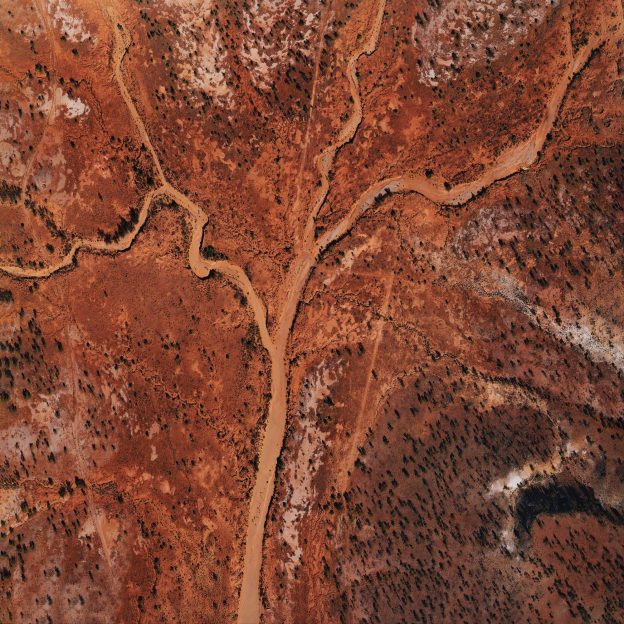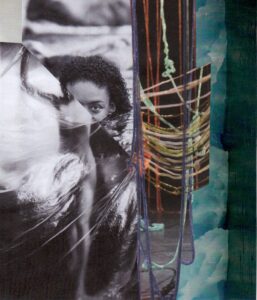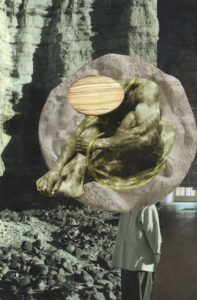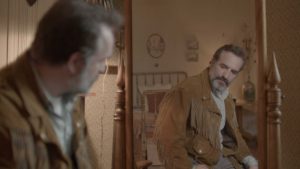with WATERMARKS
photography by PAUL HARMON
Issue 004: APOCALYPSE, and I don’t know how to begin. I don’t know how to begin an editorial statement at an evolving time like this, when it’s never been easy to find words adaptive enough to flourish through a happening as insistent and inventive as the destruction of humanity, and its worlds. But you and I both know—maybe now more than ever—we simply can’t let all this be finished, not really; we couldn’t possibly mean the end.
Not like that.
So we’ll carry on, enduring all the way, lest we risk surrender to an enemy that doesn’t deserve our precious souls: call that enemy fear, obedience, indifference, evil, or hate. Then let me start with a ‘line of flight’, a half-sentence I’ve read or written again and again in various iterations during the five years I’ve partly devoted to the study of apocalypse: originally, in its Greek form, apokalyptein meant to uncover. To reveal, unveil, strip, expose—like you would your lover, or your enemy. And in its Latin variant, apocalypsis meant revelation. Revelation: the transmission of transcendent mysteries to mortal beings, or more simply: a confession, a divulgence, an utterance.
A word.
As steeped as my colleagues and I were in these kinds of ruminations about the hard path to knowledge, as attendant as we were to the expressions of catastrophe erupting around us, when we chose apocalypse as the central concept for Issue 004 in late 2019, we couldn’t have predicted the pandemic now unfolding around us. We likely considered other threats latent today: totalitarian nightmares, widespread terror and warfare, the swell of digital dominance, the proliferation of extreme weather events, or even the chance for nuclear conflict and fallout. And these potentials remain, even if we ignore them.
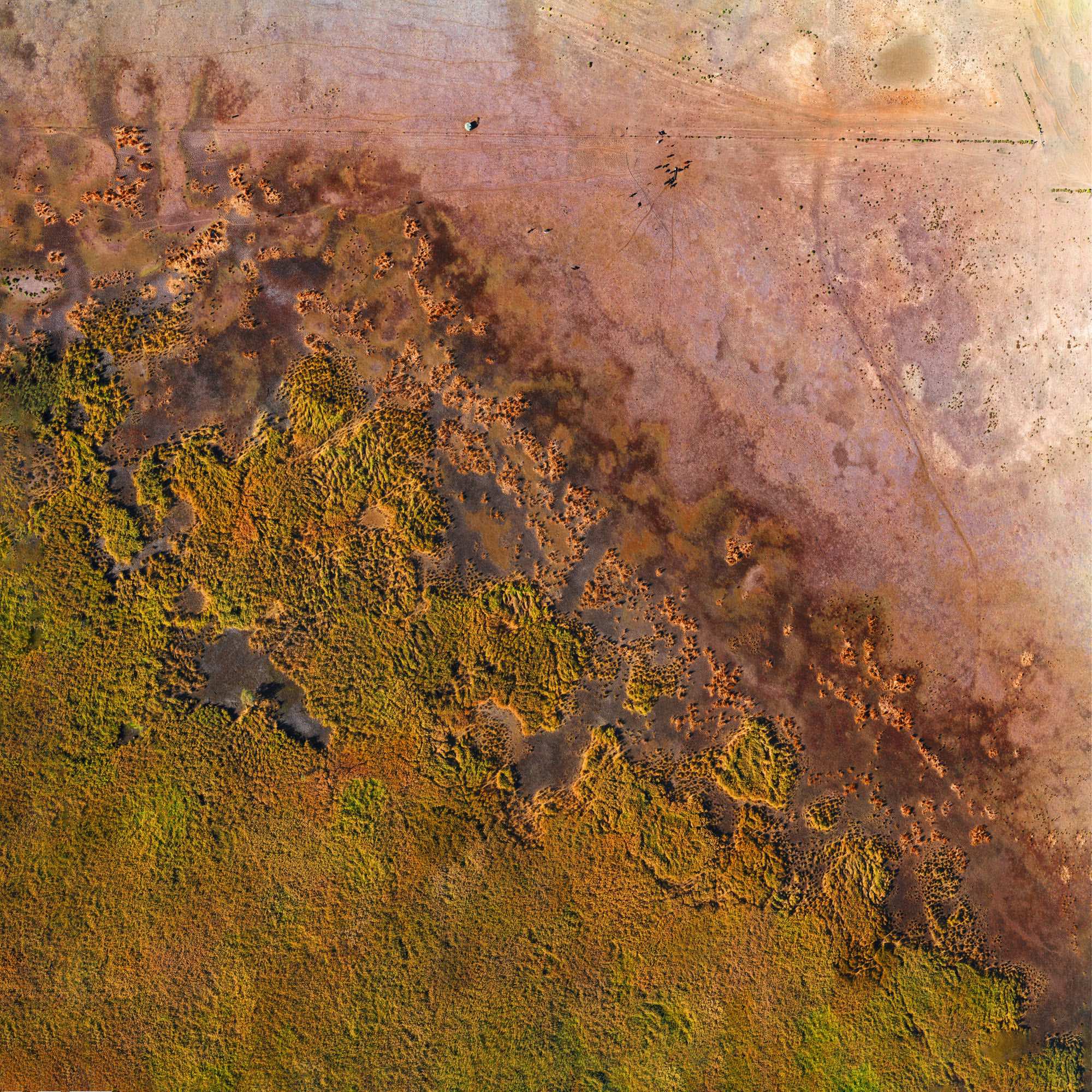
But what arrived to make that potential appear more imminent than ever was something microscopic: a virus. A virus like a spark, able to ignite chaos and ruination across this lonely planet, across and within us puny humans, buried in our daily joys, triumphs, tragedies, heartbreaks, and struggles. That’s not to suggest that, through the works curated in this issue, my colleagues and I mean to imply that the coronavirus pandemic marks the end.
Not like that.
Still, as we witness the beginning of transformations that outstrip our ability to fully understand them, this single word—apocalypse—has gained an overwhelming, insistent fragility and a seductive, descriptive allure. It’s a word that hypnotizes with the comfort of closure, of predictable explanations. But more than that, it’s a word that requires those of us who’ve begun to encounter it with increasing regularity—in films and literature, in social media and in the news—to bear the psychic weight of its burdensome denotation, destruction, and hold tight to the luminescence of its shimmering connotation, revelation, keeping them in impossible, intertwined companionship.
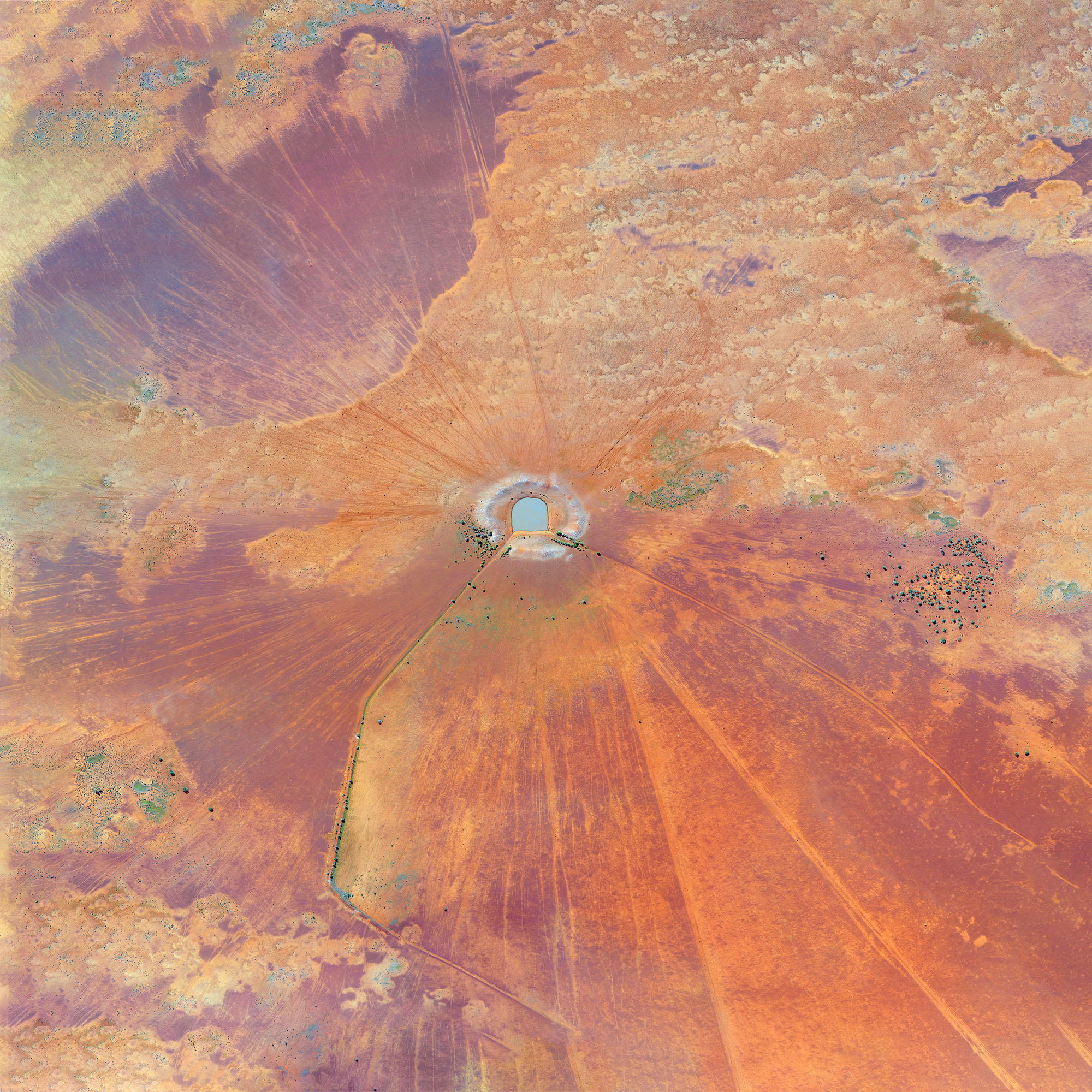
That’s where we started, in the eye of the intimate tempest swirling between these two distant interpretations: revealed knowledge on the one hand, wreckage on the other. And through these first long days of crisis, a crisis whose end is not yet in sight, buffeted as we are by boredom, loneliness, exhaustion, uncertainty, mortality, by knowledge or experience of poverty, displacement, hunger, we’ve protected—tenderly—a statement that lies in the obscured, desirous heart of our founding discipline, psychoanalysis: destruction is a cause of coming into being.
I suppose here I should say: apocalypse has a way of making a writer like me wax poetic. I would apologize, but it proves a point: with apocalypse, even each word becomes urgent, alchemical, as the boundaries between entities blur. Let me go on, and mention the way a word can act like a fractal of apocalypse, as it kills the thing, to make it new and known. At the very root of our beings, language itself enacts a violence, a finality. Which brings me back to where I started: the end. Since here we are at last, unable to ignore that ultimate possibility, even as we know the coronavirus pandemic is not the first or last time catastrophe has destroyed worlds.
That’s where our team started too, looking back through the hidden histories that have delivered us to a tangled present, to a global system that’s built dominance by decimation, through generations. There’s a lot to learn from those riotously thriving in the wake of supremacy and constant growth. Perhaps first among these lessons is one that unexpectedly collides with therapeutic work, one we’ve returned to again and again: when trouble comes, stay with the storm.
To accompany this issue of Stillpoint Magazine we have launched a brand new Spotify profile, wherein you can find two commissioned playlists by Meg O’Doherty, intended to accompany you through these Apocalyptic pages and beyond–into your daily walks, to kick-start your evening kitchen boogies, or to play out the windows of your home out into the world beyond. Click the links below to be transported:
PLAYLIST #2: LEAN IN/LEAN OUT: THE SUPPORTIVE PLAYLIST
WATERMARKS
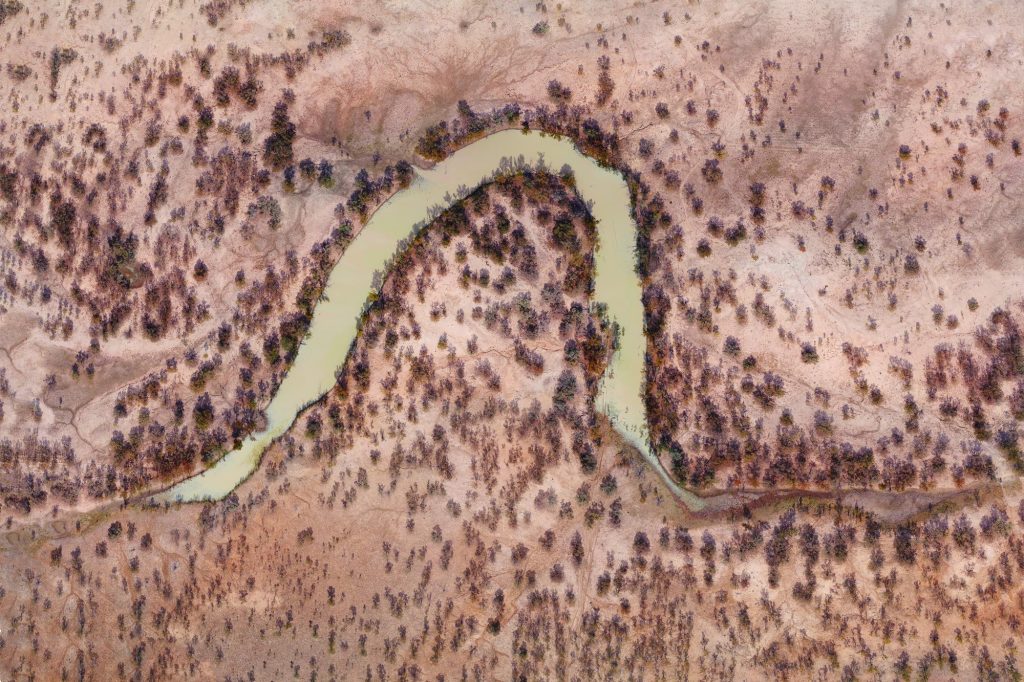
WATERMARKS is an exhibition comprising of a series of large scale (native resolution up to 2.4 metres wide) seemingly abstract aerial photographic landscapes of climate change-driven drought in North Western NSW, Australia. Their production has been a journey that has been taken over a year and 4 expeditions into the center of Australia to develop and produce.
With First Nations support, these photos were taken along the floodplains of the controversially managed and highly challenged Murray-Darling Basin that were traditionally owned by the Barkandji, Ngemba, Euahlayi and Wayilwan Nations.
ANNE MARIE WIRTH CAUCHON editor
Anne Marie Wirth Cauchon is Editor-in-Chief of Stillpoint Magazine, and Creative Director of the PrairieCare Institute’s Center for Applied Psychoanalysis, the mother of two, a PhD candidate in English and Comparative Literature at the University of Minnesota, and the author of the novel Nothing.
PAUL HARMON photographer
Paul Harmon is an US-born Australian film and television director and now fine art photographer. Before turning to photography he won an extensive number of awards as a social issues-based film maker and then continued to win awards and major nominations in just about every form of film making from feature length works through television dramatic series and documentaries. Harmon now lives with his partner in country NSW where he practices photography. He has been exhibited in numerous local photographic exhibitions in the Southern Highlands of NSW and received the Presidents Prize for Landscape at Head On 2017.
© Copyright for all texts published in Stillpoint Magazine are held by the authors thereof, and for all visual artworks by the visual artists thereof, effective from the year of publication. Stillpoint Magazine holds copyright to all additional images, branding, design and supplementary texts across stillpointmag.org as well as in additional social media profiles, digital platforms and print materials. All rights reserved.
